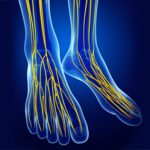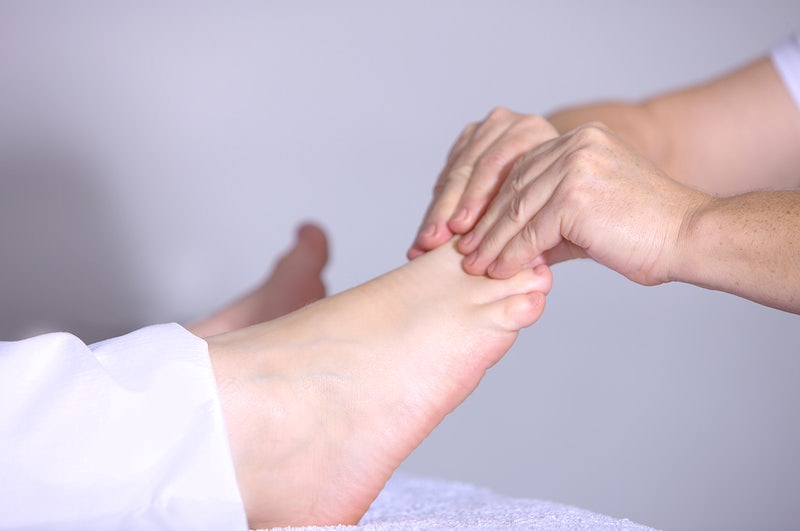La sciatica is a condition that occurs when the nerve sciatica, which starts from your spine and runs down your leg, is irritated or compressed.
Although there are many treatments for sciatica, some people get relief from honey. In this article, we are going to see how honey can be used to relieve the symptoms of sciatica.
Lumbar Spine Anatomy
La lumbar spine is the part of the spine that begins just below the vertebrae thoracic and ends at the level of the sacrum. The lumbar spine is made up of five vertebrae, which are the bones that make up the spine.
These vertebrae are numbered from L1 to L5, L1 being the vertebrate closest to the thoracic spine and L5 being the vertebra closest to the sacrum. The lumbar spine is responsible for supporting most of the weight of the body and also allows for a wide range of movements, such as bending and twisting.
The vertebrae of the lumbar spine are much larger than those of the cervical spine, and they are surrounded by thick layers of muscle and ligaments. This makes the lumbar spine very strong and resistant to injury.
However, because it supports significant weight, it is also susceptible to wear and tear, and it is one of the most common sites of pain in the human body.
Sciatic Nerve Anatomy
Le sciatic nerve is the largest and longest nerve in the human body. It starts from the lower back, crosses the buttock and goes down along the leg. the nerf sciatica is made up of several smaller nerves that come together to form a single large nerve.
These smaller nerves are called L4-S3 segments. The nerve sciatica gathers these small nerves into a thick strand and pulls them through the gluteal muscles to the hamstrings. The nerve sciatica usually divides into two individual nerves at the gluteal fold, the tibial nerve and the fibular nerve.
These nerves run parallel to the back of the thigh to the crook of the knee. There, the tibial nerve runs in a straight line along the calf and the medial part of the ankle to the foot.
The fibular nerve, in turn, divides into two branches in the popliteal fossa: the deep branch extends over the lateral calf, over the lateral ankle and over the forefoot.
The other, more superficial (superficial ramus) pulls the outer surface of the tibia along its entire length towards the origin. This division occurs in an area supplied by arterial perforators from both below and above. There is therefore an anastomosis between these vessels which ensures good blood supply to the two branches if one of them is cut. »
Sciatica, definition and explanation
La sciatica is a term used to describe nerve pain in the leg that is caused by irritation and/or compression of the nerve sciatica. The sciatica originates in the lower back, radiates deep into the buttock and runs down the leg.
The symptoms of sciatica are usually felt along the course of the great nerve sciatica. The nerve sciatica is the longest and widest nerve in your body, it starts at your lower back and runs down each leg.
It is made up of several smaller nerves which branch off from the nerve sciatica. When one of these small nerves is compressed or irritated, it can cause pain in the leg. The sciatica is most often caused by a herniated disc, a bone spur or constriction of the nerve sciatica by the muscles.
These conditions can put pressure on the nerve sciatica and cause pain that radiates down the leg. Other less common causes of sciatica are spinal tumours, infections or injuries.
La sciatica can also be caused by pregnancy, when the weight of the baby puts indirect pressure on the nerve sciatica.
Medical and alternative treatments
When you suffer from sciatica, you may feel like the pain will never go away. But the nerve pain sciatica is a very common condition that usually improves over time. In the meantime, there are treatments that can help relieve nerve pain. sciatica.
pharmaceuticals
Medications are often prescribed to help relieve nerve pain sciatica. These can be over-the-counter pain relievers like ibuprofen or naproxen, or prescription medications. If your pain is severe, your doctor may also prescribe corticosteroids to help reduce inflammation.
Physiotherapy (physiotherapy)
Physical therapy and exercises are often recommended to help treat nerve pain sciatica. Physiotherapy can help loosen tight muscles that may be pressing on the nerve sciatica. Exercises to strengthen the core and improve flexibility can also help relieve nerve pain. sciatica.
Osteopathic manipulation
Osteopathic manipulation and chiropractic adjustments are two alternative treatments that have been shown to be effective in treating nerve pain. sciatica. These therapies aim, among other things, to manipulate the spine and relieve pressure on the nerve. sciatica.
Exercices
Exercises may also be recommended to strengthen the muscles around the nerve sciatica and improve range of motion.
Infiltrations
Injections, such as epidural steroid injections, may also be helpful in treating nerve pain sciatica. These injections help reduce inflammation and relieve pressure on the nerve sciatica.
Acupuncture
Acupuncture is another alternative treatment that has been shown to be effective in treating nerve pain. sciatica. Acupuncture involves placing needles in specific points on the body to promote healing and relieve pain.
There are also several natural remedies that can be helpful in treating nerve pain. sciatica. Taking supplements like omega-3 fatty acids or vitamin B12 can help reduce inflammation and improve nerve function.
Grandma's remedy of applying honey to the affected area can also help soothe nerve pain. sciatica.
Honey, effective against pain related to the sciatic nerve?
Honey has been used for centuries to treat a variety of ailments, and it is gaining popularity as a natural treatment for pain in the stomach. sciatica. Many people suffering from sciatica report feeling relieved after applying honey to their skin.
Although there is no solid scientific basis to support the use of honey for sciatica, many people report feeling pain relief after applying honey to their skin.
Some theories explaining the mechanism of action of honey for sciatica suggest that it may help reduce inflammation and relieve pain by acting as a natural anti-inflammatory agent.
How to use honey for relief?
If you would like to try honey for pain relief sciatica, you can use it in different ways. You can take a spoonful of honey on its own, mix it with herbal tea, or apply it topically to the affected area.
Just be sure to use raw, unprocessed honey for maximum benefit.
Other Natural Sciatica Treatments
Other treatments for sciatica include:
- Acupuncture;
- Chiropractic adjustments;
- Herbal remedies;
- Massage therapy;
- Nutritional supplements;
- Stretching exercises.
Grandma's remedies for sciatica may include:
- Application of ice or heat;
- Ginger ;
- Turmeric ;
- Chamomile tea.
Conclusion
Although there is no scientific evidence to support the use of honey and other natural treatments, significant relief is often seen. That said, these products should not replace medical treatment.
If you are considering using natural treatments for sciatica, always tell your doctor and consult a homeopath if necessary.











